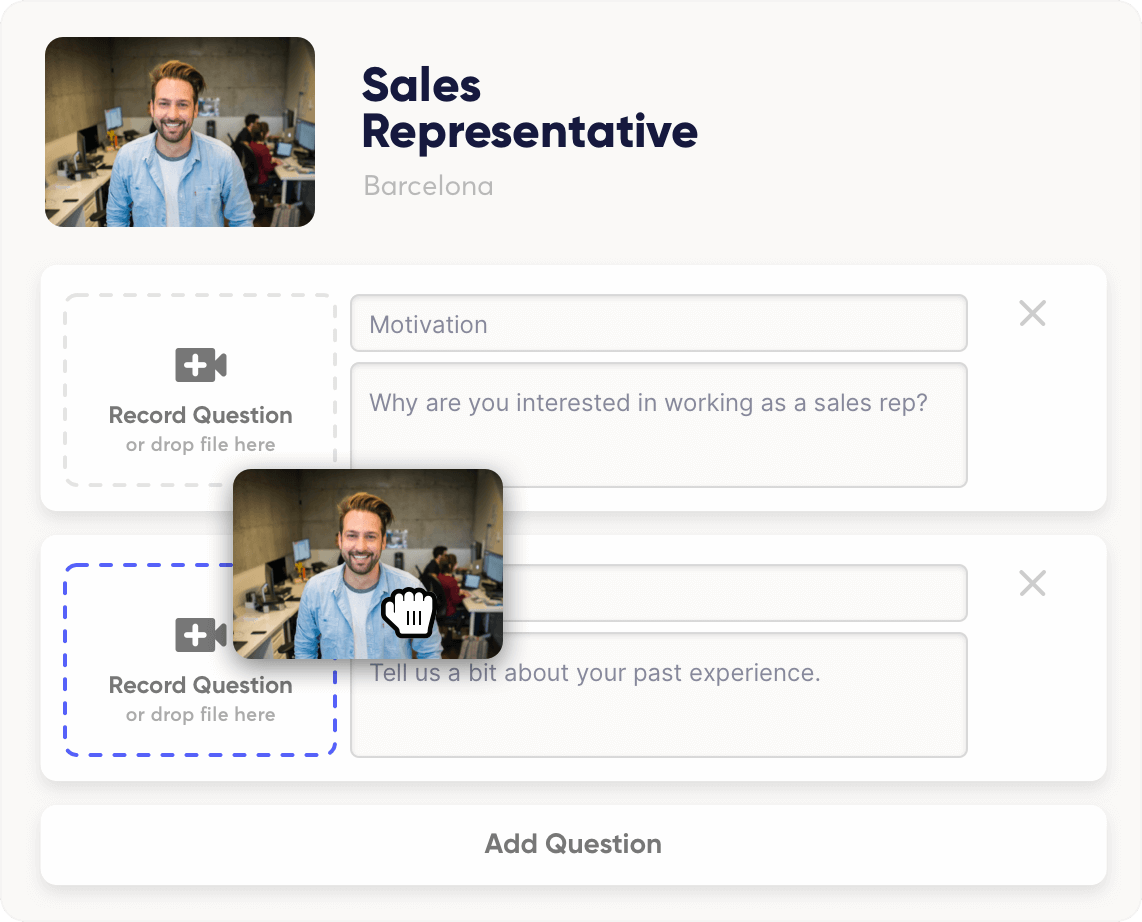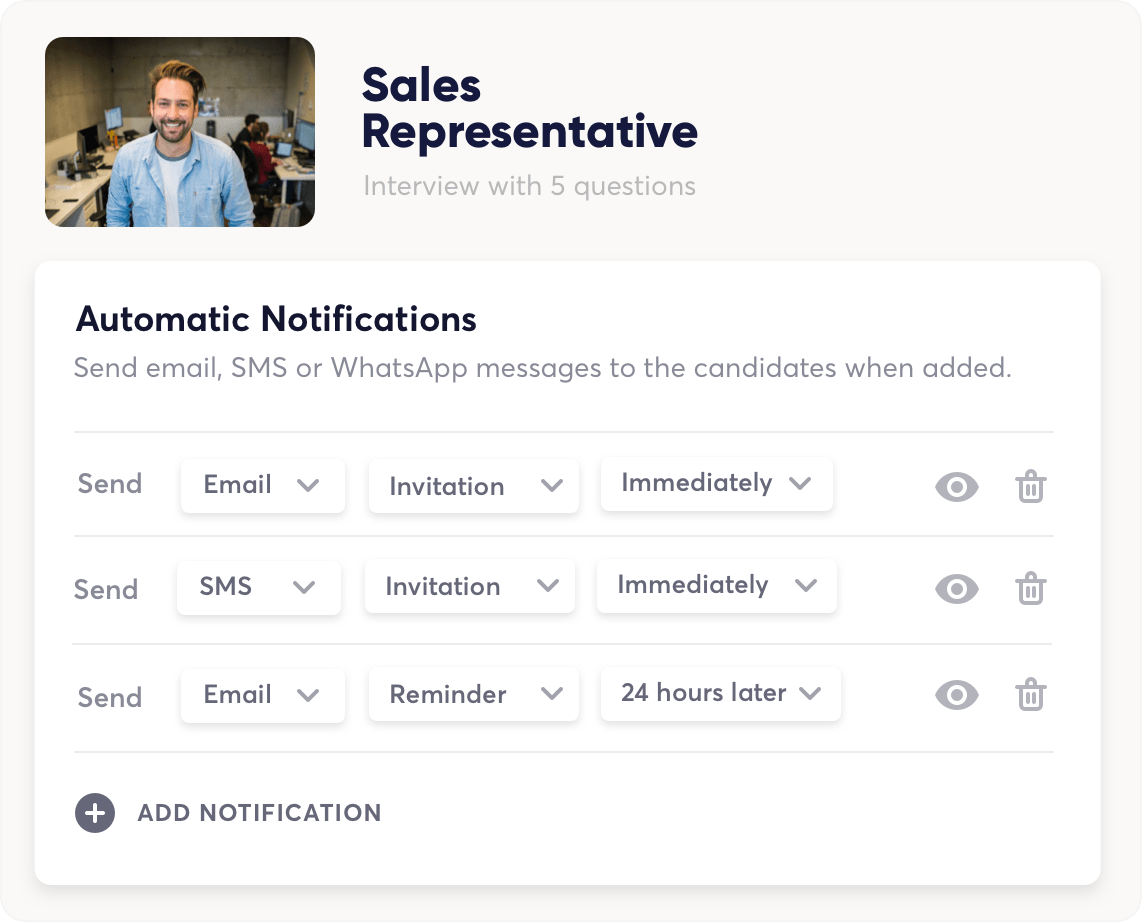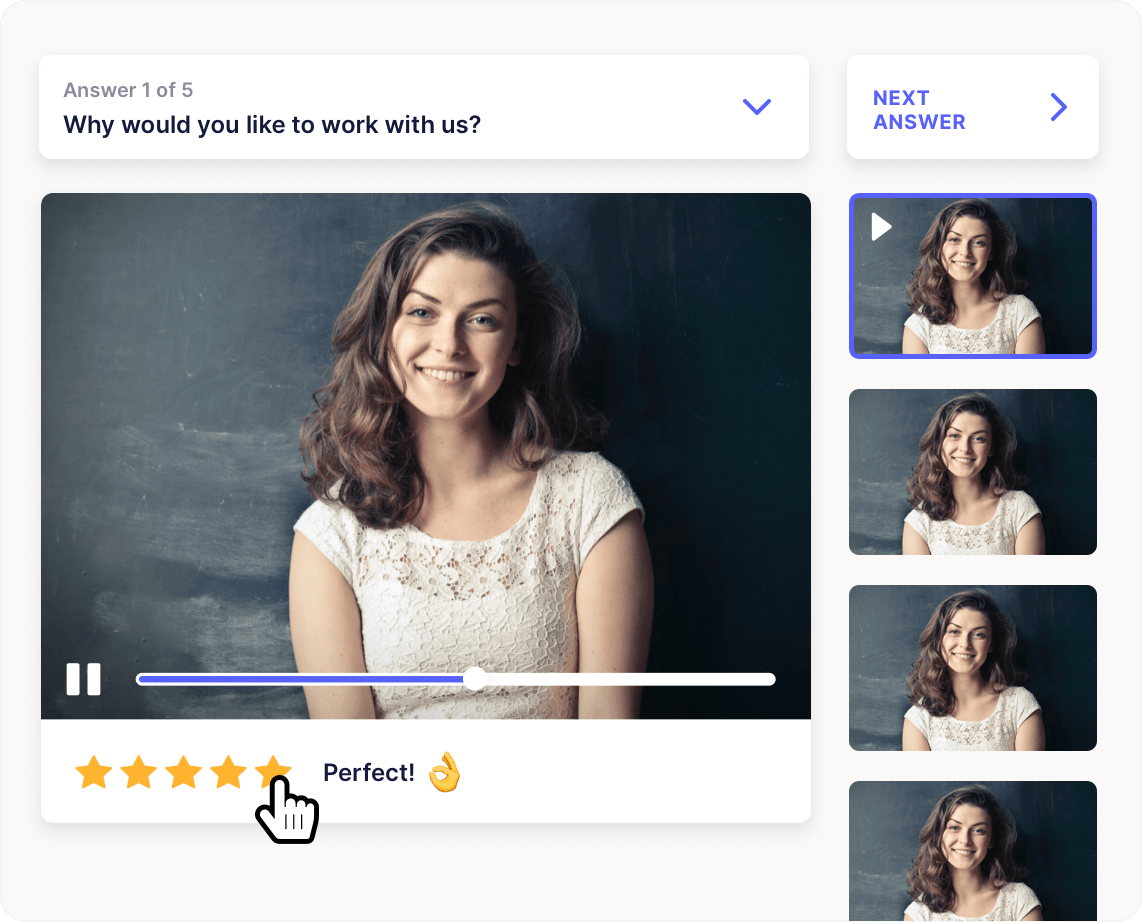The 8 Best Candidate Screening Methods to Make Better Hires

Hireflix is a one-way interview software that’s used by top companies and institutions around the globe like Chick-Fil-A, the University of California Berkeley, Coca-Cola, Sotheby’s International Realty, and more.
We’ve helped thousands of businesses big and small enhance their candidate screening process and produce better hires, faster. And today, we’ll show you how to do the same.
No more wasted time on endless phone screens, scheduling conflicts, or bad hires that slipped through the cracks.
In this post, you’ll discover:
- What candidate screening is and why it matters
- The eight most common screening methods employers use
- Potential pros and cons of each method
- How technology can help you screen candidates more efficiently
- How Hireflix can make your candidate screening simple and effective
Let’s get started.
What Is Candidate Screening?
Candidate screening is a process of reviewing job applicants’ skills and experience to see who is best suited to move forward through the interview process.
At the very least, candidate screening involves:
- Reviewing applicants’ cover letters and resumes for obvious red flags
- Evaluating applicants’ answers to a short set of screening interview questions
Depending on the type of job and the needs of the employer, other layers of screening may also be in place. (More on that below.)
In essence, a good screening process can highlight stand-out candidates (achievements, skills, expertise) and reveal any potential concerns (skill gaps, inconsistencies, lack of experience).
In a fast-paced hiring market, setting up an effective screening process is the only way to keep ahead of the curve and snatch up the best candidates. However, when it comes to the practicalities of screenings, companies are often hindered by time, cost, and ineffective or inconsistent systems.
Fortunately, Hireflix can help. Our on-demand video interviewing software can make efficient screening easier than ever.
The 8 Best Candidate Screening Methods
While every company, recruiter, or hiring team may have their own systems, those who conduct candidate screenings use at least one of the following methods. They may even use a combination of several.
» Full Cycle Recruiting: A Comprehensive Guide for HR Professionals
1 - One-way video interviews

One-way video interviews allow candidates to answer pre-screening interview questions remotely. This asynchronous interview method is a huge time-saver – candidates can submit their answers when they’re ready, allowing you to review them in batches at your leisure.
To ensure that candidates still love this method and to not lose the personal touch, software such as Hireflix allows you to add an intro video to your interview, and you can even ask questions with video as well. Those videos are great opportunities to showcase your company and culture and to engage with candidates at scale.
In high-volume hiring scenarios, one way video interviews are a must.
2 - Live video interviews

With live video interview screenings, interviewers and interviewees meet live via two-way on-screen calls. The most obvious advantage is that both can engage directly together in real time.
While live video interview screenings may give you the most accurate reading of a candidate’s charisma and personality, they can prove extremely time-consuming, both to schedule and to conduct.
In some hiring scenarios, because of a large volume of applicants and time constraints, such methods are simply not feasible.
3 - Phone interviews

A phone screening interview carries some of the same benefits as a live video screening – with just a few differences.
For the candidate being screened, talking on the phone may relieve some tension and anxiety, since they know they don’t have to worry about maintaining a specific facial expression or demeanor.
By the same measure, however, since the person conducting the screening cannot read facial expressions or body language, they may find it more difficult to evaluate factors like personality and charisma. Phone screens are also time consuming to schedule and in some scenarios just not feasible if applicant volume is very high.
4 - Assessment interviews

An assessment interview is a type of structured interview in which each job applicant is asked the same series of questions in order to determine basic competency. Often, the questions center on practical, on-the-job scenarios.
While some assessment interviews deal with the more hypothetical, in which candidates are asked how they would solve a problem, others require take-home assignments. Some assessments even involve paid trial projects in which candidates can show their skills and prove themselves.
While assessment interviews come with the obvious benefit of demonstrating competency in real scenarios, they’re less likely to be used during the screening phase because of the cost and time constraints involved.
5 - In-person interviews

For an in-person screening interview, both the interviewer and interviewee sit down face-to-face in the same room. This method provides the highest level of engagement and allows recruiters and hiring managers to judge things like personality, body language, and soft skills.
On the downside, in-person interviews are among the most time-consuming and inefficient methods for job screenings. As a result, most employers save in-person interviews for the final stages of the hiring process.
6 - Applicant Tracking System automated screening

Thanks to recent technological advancements, Applicant Tracking System (ATS) software has been developed that can screen resumes for certain criteria and keywords, weeding out any candidates who don’t meet the parameters.
While ATS is a huge time-saver for candidate resume screening, it is not foolproof. According to research conducted by Harvard Business School, these rigid parameters often lead automation to “exclude from consideration viable candidates whose resumes do not match the criteria but who could perform at a high level with training.”
While ATS is not a foolproof system, when you’re dealing with thousands of applicants, there’s simply no substitute for an initial scan.
7 - Manual resume and cover letter screening

Because ATS screening systems have gaps that could potentially filter out some of the best candidates, some employers still rely on some measure of manual resume and cover letter screening.
This process, is a great choice to at least do a first quick filter that you can then take to a more comprehensive pre-screening step such a one way video interview. In the case of high-volume hiring, however, manual CV screening might not be practical and hence a different method will be needed.
8 - Social media screening

While it has been traditionally expected that new hires will undergo a formal background check, in more recent days, HR departments and others involved in hiring have begun conducting early social media screenings to weed out potential candidates.
The way people communicate with others online can tell you a lot about who they are and how they conduct themselves. For that reason, many companies have now instituted some form of social media screening for all their applicants.
It should be noted, however, that social media screening has its own pitfalls. Employers should be careful not to violate a job seeker’s privacy and beware of how their own biases may play into how they evaluate a qualified candidate’s social media use.
How to Improve Candidate Screening With Hireflix
If the idea of instituting candidate screening feels overwhelming, we have good news.
Hireflix’s premium tools can help you get started – or improve on the system you already have.
Let’s take a look.
Save time and money

Hireflix puts the power of the digital interview at your fingertips.
Hiring teams can record their screening questions just once, then sit back and review candidate responses at their own pace, eliminating the need to schedule tens or hundreds of live screening interviews while saving you countless working hours—and brain cells.
Automate your process

Through traditional interviewing methods, screening applicants at scale would require an entire team.
With Hireflix’s automation tools, however, there’s no need to schedule interviews or phone calls with the entire candidate pool. Candidates can simply view an interview question from the hiring manager and record their answers in their own time.
Easily review and share the video responses

Once the screening interview responses start rolling in, you and your team can divide and conquer, working through candidate submissions when it suits you best.
You can share the virtual interview responses with your hiring team via whatever method best suits your needs:
- SMS
- Slack
- Etc.
It’s never been easier to keep the whole hiring team on the same page.
Integrate with your ATS

If you like the idea of switching over to Hireflix for its one-way video screening and interview capabilities but worry that the change might prove disruptive to your current systems, think again.
No matter the recruiting automation software you currently favor, Hireflix's one-way video interview software can effortlessly integrate into your existing remote hiring process.
Our one-way video interviewing software API allows for easy integration with any ATS, CRM, or any custom system you may be using.
Conclusion
In today’s fast-paced hiring market, when the most talented hires leave the pipeline in the blink of an eye, it’s imperative that you have a fast and efficient candidate screening process in place.
While live, in-person interviews are best for the final stages of the hiring process, the early phases can move faster with the help of robust applicant screening software to jumpstart the initial phases, weed out unqualified candidates, and move the best potential hires through the pipeline.
To that end, Hireflix’s on-demand, one-way video interview software and premium automation tools help simplify and elevate your candidate screening process.
To learn more about best practices for candidate screening and discover further benefits of implementing one-way screening interviews with Hireflix, be sure to contact us. Reach out and get your free demo today.

